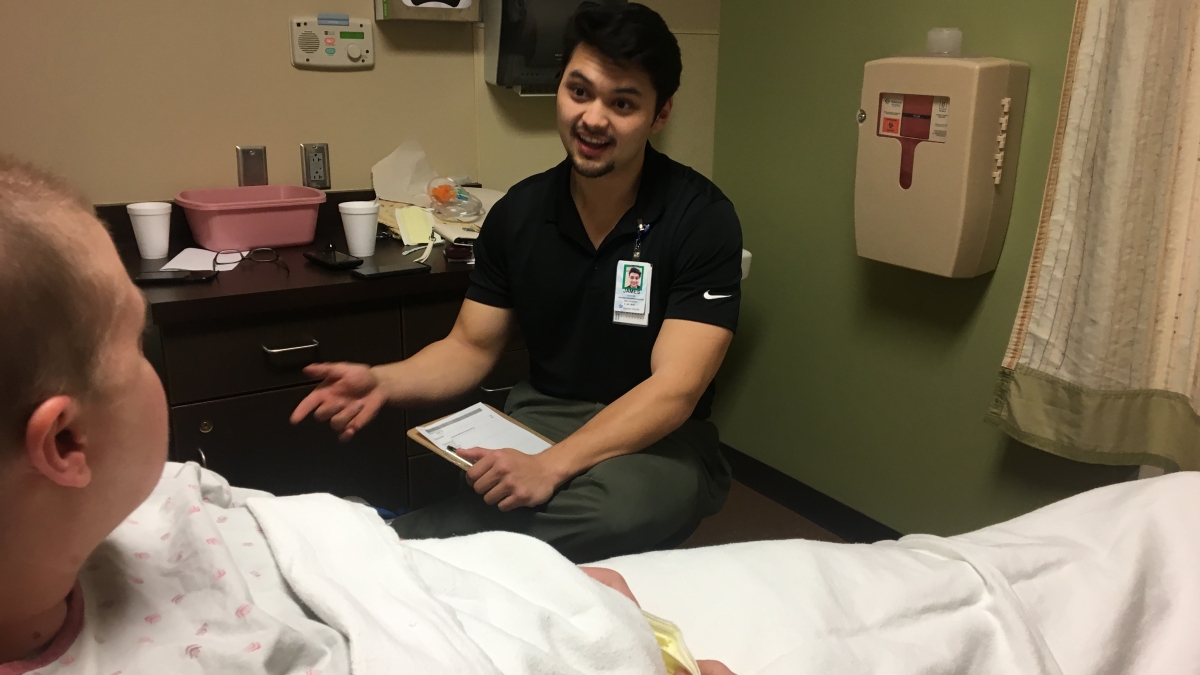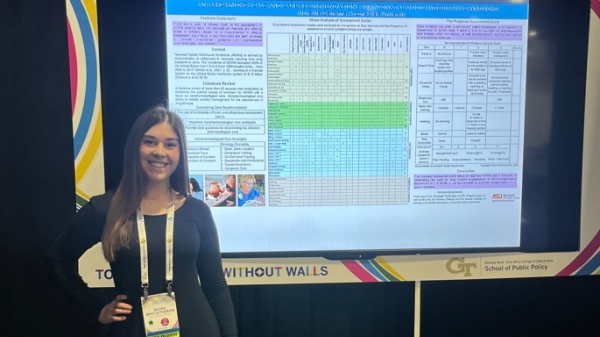ASU program helps students interact with Banner MD Anderson cancer patients
Banner partners with ASU through BIO 390 program

Banner MD Anderson Cancer Center patient Sarah Corl speaks with ASU pre-med intern James Hosobe in the emergency department at Banner Gateway Medical Center in Gilbert.
Arizona State University pre-med students are entering into the emergency department to learn the best ways to communicate with patients at Banner MD Anderson Cancer Center. Students through the Pre-Health Internship Program register for the course, BIO 390, and complete clinical hours at the hospital. While the program has been available at other Banner hospital emergency departments, this is the first time Banner Gateway has accepted student interns. The program also partners with Banner University and Banner Desert Medical Center.
Ten students began serving as “lay navigators” at Banner Gateway Medical Center this Spring. Throughout the semester, they spend time developing their skills interacting with patients while under guidance of medical professionals. For example, students will help in updating patients on wait times for treatment, assessing their comfort needs, and communicating their needs or concerns to appropriate staff members. Students also learn about the patient-focused culture of Banner Health, with a firsthand look at how the nonprofit organization’s values are demonstrated through the actions of its employees.
“This is a great opportunity for us to partner with future physicians in communication and interactions with patients and share the role of nursing in the coordination of care,” said Julie Segovia, clinical administrative director at Banner MD Anderson and Banner Gateway. Interns will spend eight hours each week at the hospital. Success of the program will be determined by factors such as patient satisfaction and effective communication.
Student James Hosobe, 25, said the chance to learn in the emergency department at Banner Gateway especially resonates with him. One of his close family members was treated there for heart complications and has fully recovered. Hosobe said the internship will help him develop core values, such as compassion, which he’ll use throughout his future medical career.
“Already, I’ve had experiences that range the full spectrum with patients. Some don’t want to talk at all, because they’re in pain, and others just want an ear to listen,” Hosobe said. “It’s very important to learn the best ways to communicate with patients when they need help the most.”
For more information about ASU's Pre-Health Internship Program, visit https://clinicalpartnerships.asu.edu/phip.
More Health and medicine

Nursing student wins top award for research on neonatal opioid withdrawal
An experience Moira MacCatherine had as a teenager volunteering in a Level III neonatal intensive care unit impacted her in such…

College of Health Solutions course to explore science behind longevity, well-being
Arizona State University’s College of Health Solutions has responded to the surge in interest in blue zones — those rare…

ASU center hosts community gathering to discuss latest health research
Communication and collaboration were front and center as Arizona State University’s Center for Health Information and Research,…